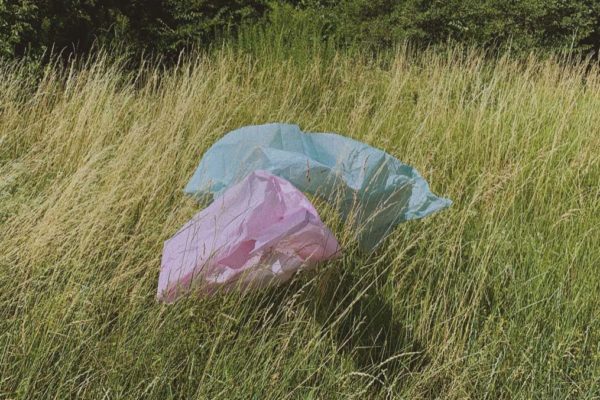It’s both an exciting and detrimental time for change in the fashion industry. I’ve felt like this for a while with the urgency of climate change knocking on our doors, and fashion’s impact intertwined with it.
This all came into focus for me in this last week at the Legacy Fashion Summit in Sydney, presented by Melinda Tually (Director, Ndless: The New Normal, Fashion Revolution Australia). One of the panels ‘Heating Up: Climate change and the fashion industry’ included both designer Kit Willow (Founder, KITX) and climate scientist Dr. Martin Rice (Acting CEO & Head of Research, Climate Council).
Image via LEGACY Responsible Fashion Summit
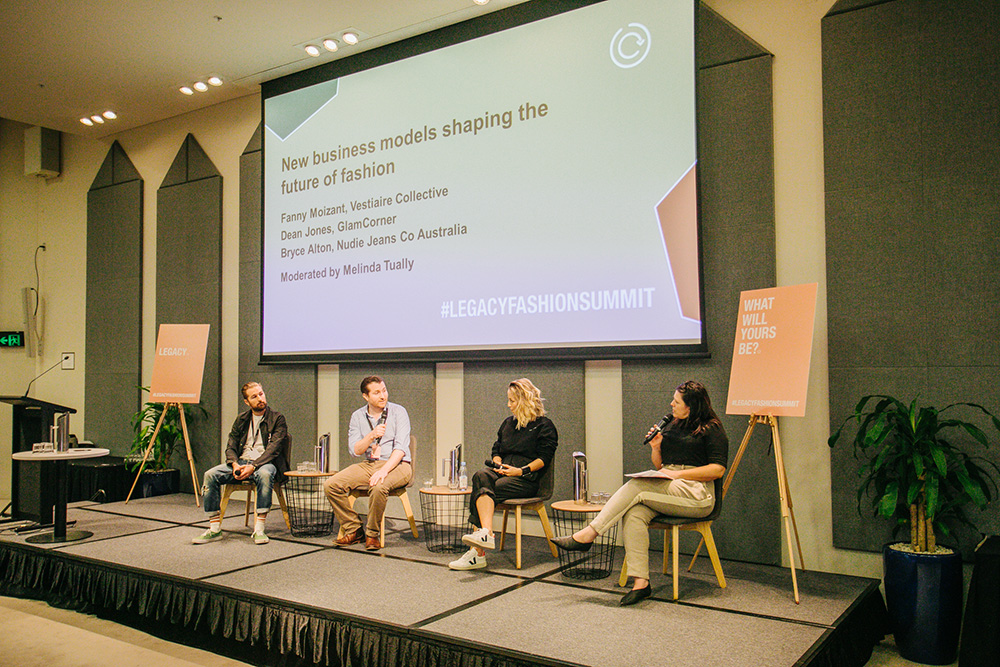
One of my biggest takeaways from this discussion was the importance and value of different industries collaborating to solve large scale issues. Science, technology, and fashion haven’t always come hand in hand, but together they can achieve much more.
To move fast to shift consumer mindsets, become a carbon-absorbing industry and create drastic change, technology and innovation must be incorporated in fashion. The following ideas have already taken shape, some of which are being adopted by smart businesses (and succeeding!) – what will be next?
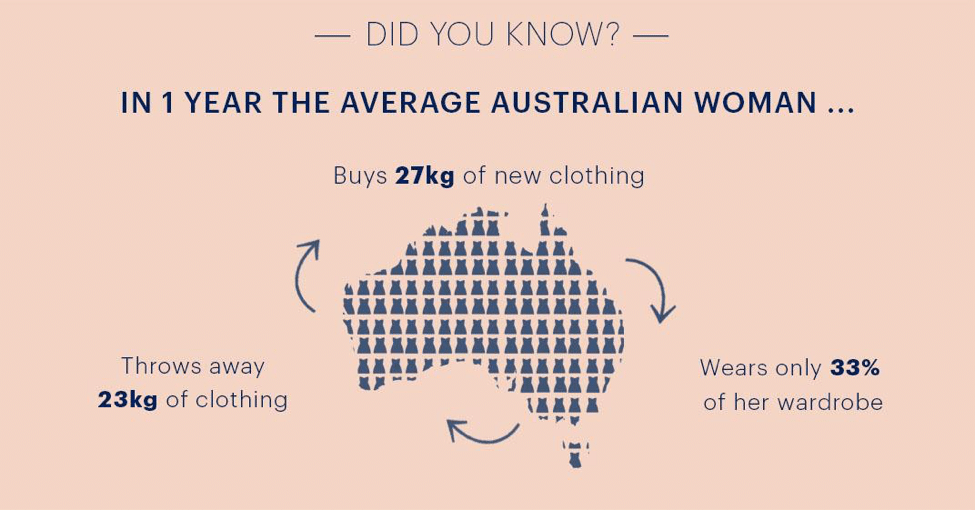
Image via GlamCorner
Fashion rental
Let’s face it, we live in a superficial world and fast fashion costs both money and the environment. Greenpeace stated in 2017 that, ‘The average person buys 60% more items of clothing and keeps them for about half as long as 15 years ago.’
Jenny Cermak (Partner, McKinsey & Company) at Legacy raised a valid point in her keynote that fashion rental could be popular because there’s a demand for fast fashion with accessible luxury garments. It also just happens to be a double-whammy that it’s environmentally better to hire clothing.
Fashion rental allows consumers to hire high-end garments at a fraction of the cost, in return increasing a garment’s lifecycle. Rent The Runway, founded in 2009 by Jennifer Hyman, was one of the original adopters of this idea. In 2016 it passed the $100 million revenue mark, showing the quick uptake of this idea by consumers.
Glam Corner and EkoLuv are two prime examples in Australia of fashion rental services, from dresses to bags, check them out!
‘Browse through our collection of over 9,000 of the best designer dresses and gowns. Book your favourite dress online and we’ll deliver it to your door anywhere in Australia.’ – Glam Corner
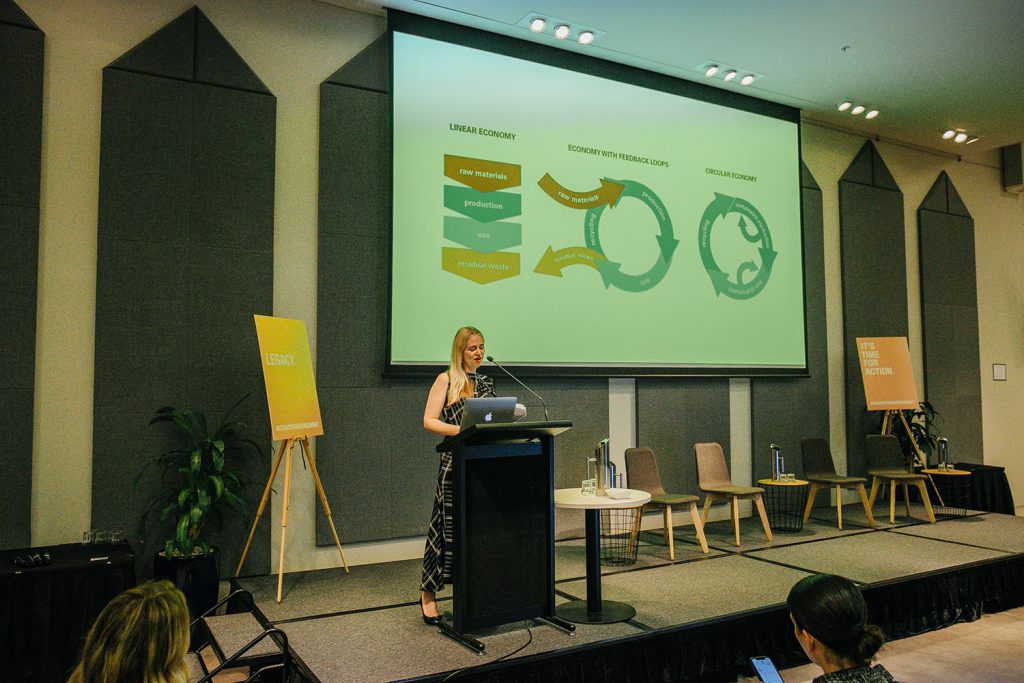
Image via LEGACY Responsible Fashion Summit
Alternative materials
There are endless issues with current mainstream fabrics, for example, polyester (synthetic fabric) can be toxic to workers and pollute waterways. Cotton is also an environmental hazard, consuming enormous levels of water and pesticides to grow.
Companies such as Bold Threads are evolving fabrics, producing new products that are environmentally safer. Microsilk, based on natural silk, is one of Bolt Threads’ materials produced sustainably at large-scale. UK luxury brand Stella Mccartney collaborated with Bolt Threads last year, to produce eco garments made from microsilk.
Australian fashion brand KitX is also an adopter of alternative materials, such as swimwear made from recycled fishnets. Kit believes that her fashion should not come at the cost to the planet, which is why looking into alternative materials is one of the best eco solutions for fashion brands.
Tailoring
Fast fashion has come at the cost of many things, one of them is simply well-fitting clothing. Last year Forbes wrote a piece, claiming that the ‘The Fashion Industry Is Missing A Nearly $300 Billion Global Opportunity’ by not focusing on tailoring to consumers different size and shapes.
An innovative fashion brand that has adopted this idea is Citizen Wolf, producing ethically made to measure t-shirts in Australia. Not only do they use lasers to cut fabric which reduces waste and environmentally friendlier fabrics (i.e. hemp), the brand allows the option of ‘magic fit’ tailoring.“We use technology to automate the process of tailoring. Why? Because fast fashion is an unsustainable environmental emergency and the world needs smarter clothes.”
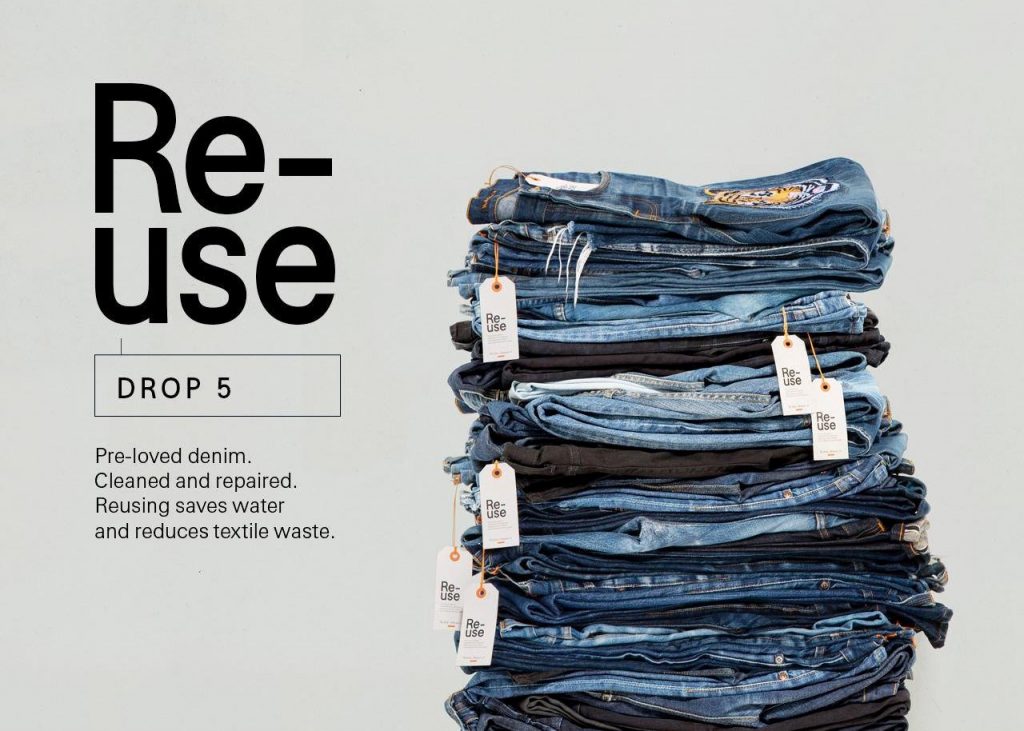
Circular denim
Denim has a devastating effect on the environment and workers health, using around 2000 gallons of water just to produce one pair of jeans. The dying process is also chemically intensive, with workers inhaling toxic fumes and waste dye trickling into rivers and oceans (check out the doco River Blue for more info). Luckily designers, scientists, and brands are all working together to reduce these impacts.
Nudie Jeans is an Australian denim brand with a circular focus, encouraging a take-back recycling scheme and free repairs. Nudie is wanting to reduce the footprint of jeans by encouraging consumers to hold on to their jeans as long as possible by repairing, then taking back to the brand to be recycled or reused.
“Offering the free repair service and to give our customers 20% discount on a new pair when handing in an old pair are therefore a natural part of what we do, and what we do creates circularity in a longer perspective”.
Reducing denim’s damage can also be looked at from a scientific point of view. The clever scientists at Deakin University’s Institute for Frontier Materials (IFM) recently found a way of reusing old denim, by grinding it up and then coating it on new denim instead of processing.
This “…significantly reduces the energy used to heat water under the conventional dyeing process (and)…also allows dye to be reused, minimising water use and effluent discharge”. This innovative technique is now being advanced on a global scale, with the IMF team working with fashion denim brands to see if it can be used for the mass market.
I’m looking forward to seeing what future eco ideas the fashion, science, and technology industries will bring to the table!

